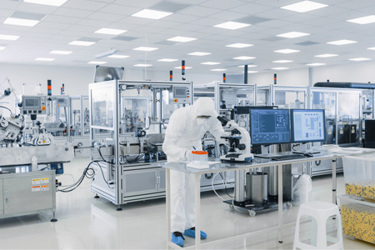Lyophilization vs. Liquid Formulation: Why Lyo Offers Advantages For Drug Manufacturers
By Desline Barber, Senior Scientist for Formulation Development, IDT Biologika

As biologics such as vaccines, gene therapy and therapeutic proteins continue to advance to commercial viability, their complexities when compared to small molecules will necessitate new and novel approaches. These drugs are susceptible to conformational changes, protein aggregation, and other issues resulting from temperature changes, freeze-thaw cycles, the introduction of certain excipients and buffers, and various other factors.
Lyophilization offers some alluring advantages in today’s complex and challenging market: by removing the moisture from the product, developers can extend its stability for more than two years, which can prove crucial in paradigms like the current COVID-19 pandemic.
However, the advantages inherent to lyophilization exist in concert with its challenges. Maintaining product stability, overcoming scale-up issues, and optimizing freezing for complex formulations are a few of the hurdles that biopharmas and CDMOs alike are working to surmount through research. Liquid formulation is the traditional, incumbent choice for many manufacturers, and its ubiquity has rendered it a comparatively straightforward process. The choice for manufacturers is further compounded by the cost of lyophilizing a product, particularly in early development, when a therapeutic’s uncertain future can make added investment a tough sell.
Despite this, many companies are recognizing the value in getting lyophilization right and are pursuing the innovations and expertise necessary to position themselves at the forefront of a fundamental shift in biopharmaceutical manufacturing.
Get unlimited access to:
Enter your credentials below to log in. Not yet a member of Outsourced Pharma? Subscribe today.
